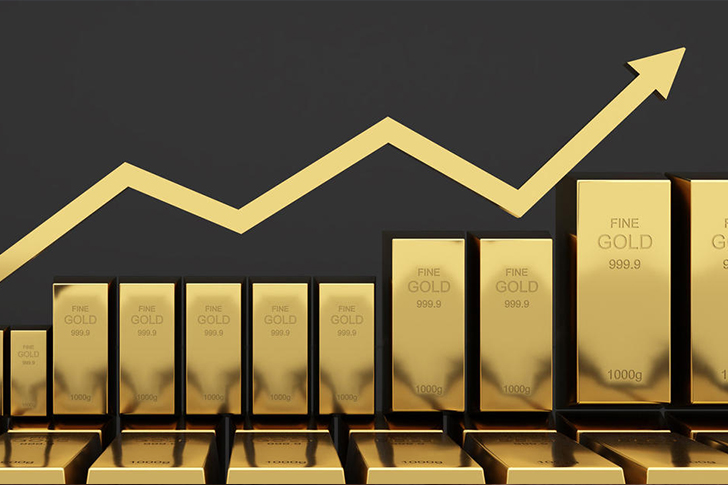8 Essential Factors to Consider When Investing in Gold
Investing in gold is a popular strategy for diversifying portfolios and hedging against economic instability. If you’re considering adding gold to your investment mix, understanding the various channels, methods, and key considerations is crucial. Here’s a detailed guide based on historical gold price trends and investment insights.

Pros and Cons of Gold Investment Channels:
- Physical Gold:
- Pros: Tangible asset, perceived safety.
- Cons: Storage costs, insurance costs, lower liquidity.
- Gold ETFs:
- Pros: High liquidity, no storage concerns.
- Cons: Management fees, no physical possession.
- Gold Mutual Funds:
- Pros: Diversified exposure to gold assets.
- Cons: Management fees, less direct than physical gold.
- Digital Gold Platforms:
- Pros: Convenience, ease of transaction.
- Cons: Platform risks, digital-only possession.
Physical Gold vs. Paper Gold
Deciding between physical gold (like bullion or coins) and paper gold (such as ETFs, stocks in mining companies, or gold certificates) depends on your investment goals. Physical gold provides tangible assets but comes with storage and insurance costs. Paper gold offers easier liquidity and is simple to trade but lacks the physical possession of the metal.
Comparison Table: Physical Gold vs. Paper Gold
| Factor | Physical Gold | Paper Gold |
|---|---|---|
| Storage | Requires physical storage and insurance | No physical storage required |
| Liquidity | Lower liquidity, harder to sell quickly | High liquidity, easy to buy and sell |
| Costs | Higher upfront costs, storage fees | Lower upfront costs, management fees |
| Possession | Tangible asset | No physical possession |
Understanding Gold’s Volatility
Gold prices can be volatile, influenced by global economic indicators, currency fluctuations, and market sentiment. For example, in 2020, gold prices surged by 24.7% due to economic uncertainties triggered by the pandemic. However, in 2021, prices dipped by 3.5%. This volatility requires investors to have a strategic approach to buying and selling gold.
Factors Influencing Gold Prices:
- Economic Indicators: Inflation rates, interest rates.
- Currency Fluctuations: Strength of the US dollar.
- Market Sentiment: Investor behavior, geopolitical events.
- Supply and Demand: Mining output, consumer demand.
Gold Price Volatility Chart
| Year | Gold Price Change (%) |
|---|---|
| 2019 | +18.3% |
| 2020 | +24.7% |
| 2021 | -3.5% |
| 2022 | -0.1% |
| 2023 | +13.4% |
Gold as an Inflation Hedge
Gold is often considered an effective hedge against inflation. The CPI rose by 3.3% in 2023, while gold increased by 13.4%, demonstrating its potential to outpace inflation and protect purchasing power. However, this relationship isn’t always consistent, as seen in years like 2022, where gold marginally declined by 0.1% despite a 6.4% rise in CPI.
FAQ: Gold as an Inflation Hedge
Q: How does gold act as an inflation hedge? A: Gold maintains its value over time and can outpace inflation rates, protecting purchasing power.
Q: Is gold always a reliable inflation hedge? A: Not always. Gold’s performance can vary year by year based on multiple economic factors.
Timing Your Investment
Timing is critical in gold investment due to its price volatility. Investors need to monitor economic indicators, geopolitical events, and market trends to make informed decisions. The historical performance, like the significant rise in 2020 followed by a decrease in 2021, highlights the need for strategic entry and exit points.
Key Indicators to Monitor:
- Economic Reports: GDP growth, unemployment rates.
- Geopolitical Events: Wars, political instability.
- Market Trends: Stock market performance, interest rate changes.
Long-Term vs. Short-Term Investment
Gold can serve as a long-term investment to safeguard assets or as a speculative short-term investment. Long-term investors may look at gold for stability over decades, whereas short-term investors may capitalize on rapid price changes driven by market shocks or trends.
Long-Term vs. Short-Term Investment Strategies:
- Long-Term:
- Stability, wealth preservation.
- Less concerned with short-term price volatility.
- Short-Term:
- Quick gains from price fluctuations.
- Requires active management and market monitoring.
Diversification Benefits
Gold often moves inversely to stock markets and currencies, making it a valuable portfolio diversifier. By allocating a portion of your portfolio to gold, you can reduce risk and improve returns, especially during times of market downturns and high volatility.
Diversification Chart: Gold vs. Stock Market
| Year | S&P 500 Performance (%) | Gold Performance (%) |
|---|---|---|
| 2019 | +28.9% | +18.3% |
| 2020 | +16.3% | +24.7% |
| 2021 | +26.9% | -3.5% |
| 2022 | -18.1% | -0.1% |
| 2023 | +15.2% | +13.4% |
Regulatory and Tax Implications
Investing in gold has specific regulatory and tax implications depending on your country. For instance, profits from gold investments may be subject to capital gains tax. Understanding these aspects is vital to maximizing your returns and ensuring compliance with local laws.
Regulatory Considerations:
- Taxation: Capital gains tax on profits.
- Regulations: Import/export restrictions, purity standards.
- Reporting Requirements: Declaration of large transactions.
Conclusion
Investing in gold requires careful consideration of how gold investments fit within your broader financial strategy. By understanding the various channels and methods available, as well as the key economic factors influencing gold prices, investors can make more informed decisions and potentially enhance their investment returns.
References







Recent Comments